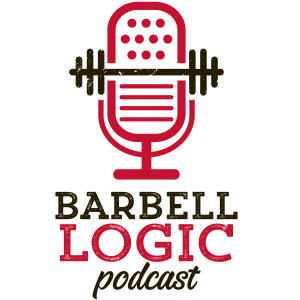
Matt, Niki, and CJ discuss introducing new exercises: why & how, different categories of exercises, determining your main exercises, and more.
Why Introduce New Exercises?Novices need to get generally stronger. The process of doing this is simple, though hard & effective, of course. Add weight to certain compound barbell movements in a set and rep range that elicits a strength and hypertrophy adaptation, while the lifter also improves technique and confidence.
The first exercise type of exercise that tends to get introduced may tell us something about at least one or a couple reasons why we would introduce new exercises. The first type of exercise that is introduced is typically an "upper body pulling" exercise, such as a barbell row, chin-up, pull-up, or lat pull down.
While initially the upper back and arms receive sufficient stress from the four main lifts, more stress is needed, especially for the upper back and biceps.
Other reasons exist, of course, for why we would introduce new lifts. We list some below.
- prevent or decrease boredom
- address a technique error
- address a muscular weakness
- "I want bigger arms"
- change in goals
- more specifically address goals
- prevent or decrease joints being beat up
- what works?
- novel stress
You can probably think of more, but there are lots of reasons to
Exercise CategoriesDifferent people and groups might have different categories of exercises, and really we could add more to the three we're going to discuss today. For example, some exercises serve more of a rehab or prehab purpose, not to elicit a strength or hypertrophy response.
Generally, though, we discuss three main categories of lifts: main lifts, supplemental lifts, accessory lifts.
We typically consider the main lifts the four main lifts - the press, squat, bench press, and deadlift, and for most novices this is true. But as a lifter advances and requires greater specificity, and, at the same time, the lifter refines his goals, the main lifts might change.
Weightlifters train the Olympic lifts and the front and overhead squats. Powerlifters' main lifts are the competition style squat, bench press, and deadlift. Same for strengthlifters, except replace the bench press with the press.
This matters, because the main lifts tend to be the most important gauge of progress - the PRs that most matter. Most other exercises should contribute to these most of the time.
Supplemental lifts are variations on the main lifts. They modify the main lift, but look similar, typically modifying range of motion, tempo, or weight implement. Examples include deficit deadlifts, pause squats, pin press, safety squat bar squat.
Accessory lifts are a bit more nebulous. They're not variations of the main lift, so they look different. They typically involve fewer joints and are easier on the joints.
Accessory lifts can help prevent joints from being beat up, stressing a muscle with less stress on the joints. They might train smaller muscle groups (bicep curls, rolling dumbbell extensions).
Introducing New Exercises - HowHow one introduces new exercises for a client really depends on that client - her goals, advancement, experience with various lifts.
For an advanced powerlifter, a lift might only be introduced for a single workout. An example would be in a Westside-style conjugate program, where the lifter goes for a 1RM on a supplemental lift.
For a less advanced lifter who simply wants to get generally strong, it's better to introduce a new lift a bit more conservatively and progress that lift until it runs out or the lifter gets sick of the exercise.
As a coach, you might prescribe an RPE or reps in reserve with a ballpark for what the weight will be. If the lifter is more experienced, less guidance may work.
Introducing new exercises, like any other coaching or programming decision, takes some understanding of the lifter and his goals, principles of programming, and some judgment.
Get your FIRST MONTH FREE on all strength and nutrition coaching plans. There's no contract and you can cancel anytime. Start experiencing strength now: https://bit.ly/3EJI18v
- Matt on Instagram
- Niki on Instagram
- Barbell Logic on Instagram
- Podcast Webpage
- Barbell Logic on Facebook
- Or email podcast@barbell-logic.com
More Episodes
 2023-08-08
2023-08-08
 2023-07-28
2023-07-28
 2023-07-04
2023-07-04
 2023-06-30
2023-06-30
 2023-03-07
2023-03-07
 2023-03-03
2023-03-03
 2023-02-24
2023-02-24
Create your
podcast in
minutes
- Full-featured podcast site
- Unlimited storage and bandwidth
- Comprehensive podcast stats
- Distribute to Apple Podcasts, Spotify, and more
- Make money with your podcast
It is Free
- Privacy Policy
- Cookie Policy
- Terms of Use
- Consent Preferences
- Copyright © 2015-2024 Podbean.com





